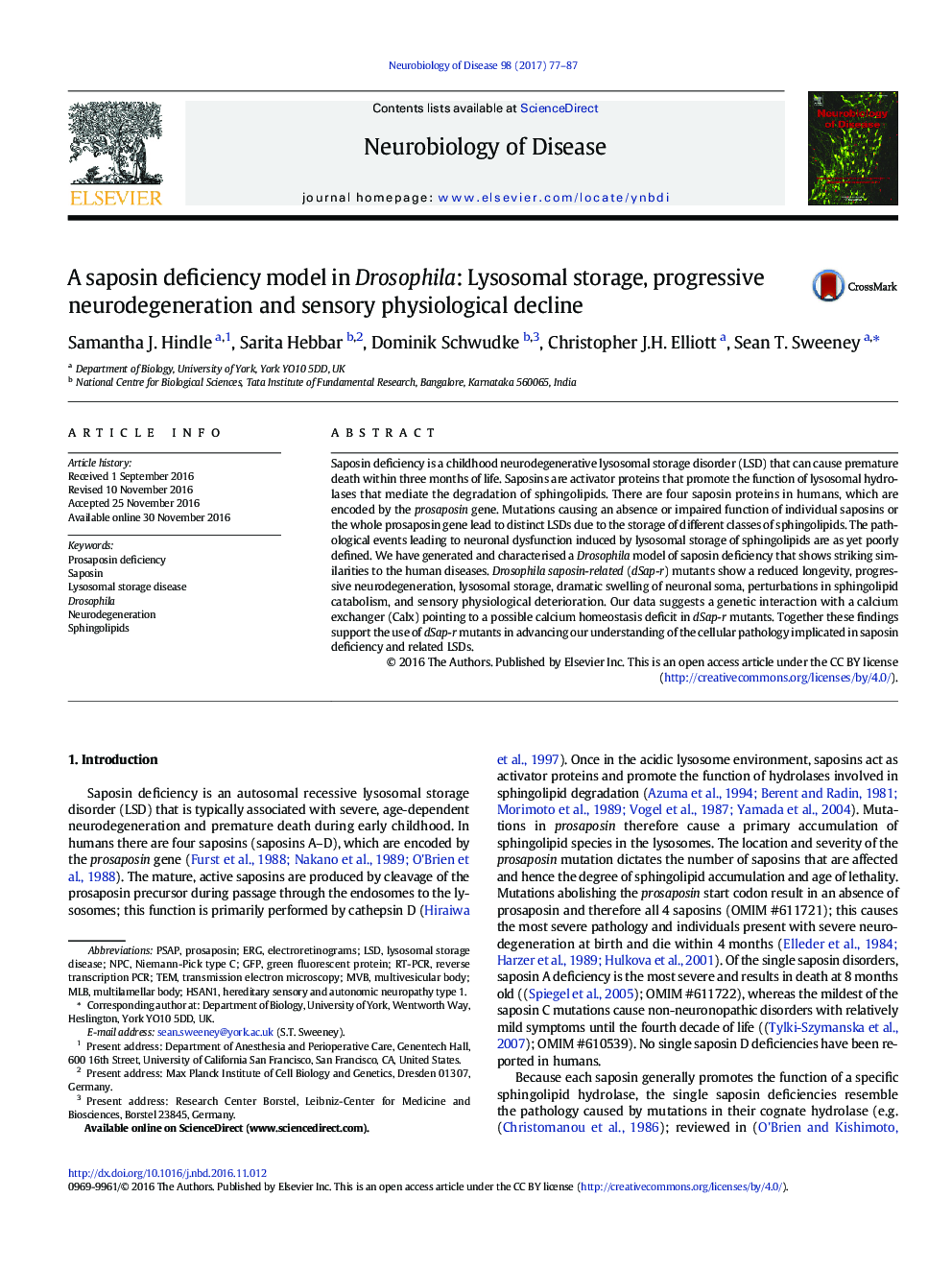| Article ID | Journal | Published Year | Pages | File Type |
|---|---|---|---|---|
| 5630703 | Neurobiology of Disease | 2017 | 11 Pages |
â¢Drosophila model of PSD recapitulates neurodegenerative phenotype of human PSD.â¢Preferential degeneration of sensory regions correlates with loss of sensory function.â¢Sphingosine levels rise with age with an imbalance in sphingosine/ceramide ratios.â¢Genetic interaction with the Na +/Ca + exchanger points to a calcium regulation deficit.
Saposin deficiency is a childhood neurodegenerative lysosomal storage disorder (LSD) that can cause premature death within three months of life. Saposins are activator proteins that promote the function of lysosomal hydrolases that mediate the degradation of sphingolipids. There are four saposin proteins in humans, which are encoded by the prosaposin gene. Mutations causing an absence or impaired function of individual saposins or the whole prosaposin gene lead to distinct LSDs due to the storage of different classes of sphingolipids. The pathological events leading to neuronal dysfunction induced by lysosomal storage of sphingolipids are as yet poorly defined. We have generated and characterised a Drosophila model of saposin deficiency that shows striking similarities to the human diseases. Drosophila saposin-related (dSap-r) mutants show a reduced longevity, progressive neurodegeneration, lysosomal storage, dramatic swelling of neuronal soma, perturbations in sphingolipid catabolism, and sensory physiological deterioration. Our data suggests a genetic interaction with a calcium exchanger (Calx) pointing to a possible calcium homeostasis deficit in dSap-r mutants. Together these findings support the use of dSap-r mutants in advancing our understanding of the cellular pathology implicated in saposin deficiency and related LSDs.
